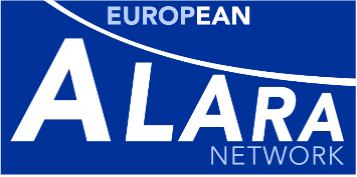
Context
The principle of optimisation in radiation protection has been published by the ICRP in the recommendation No. 22 for the first time in 1973. Since 1980 the ALARA principle has been part of the European Basic Safety Standards and has been progressively introduced into national regulations. Nowadays the effective radiation protection practice in the nuclear industry, research and related practices is not conceivable without its implementation in the practice. Therefore the ALARA principle is also an explicit requirement of both the most recent Council Directive 98/29 EURATOM laying down the Basic Safety Standards of Radiation Protection and the national regulations.
Although the ALARA principle has been integrated into various radiation protection programmes, particularly in the nuclear industry, standardised solutions or solutions generally applicable to the optimisation of the radiation protection practice have not been developed. However, the exchange of experience on techniques and tools applied effectively in optimisation practices can be very helpful in finding the most cost-effective measure of radiation protection in a given case. Therefore, in 1996, the European Commission has created the European ALARA Network (EAN) with the following objectives:
- To promote the wider and more uniform use of optimisation techniques in the various fields of application in Europe i.e. in industry, research, and the nuclear fuel cycle,
- To provide a focus and a mechanism from practical experience, and
- To propose topical issues of interest that should be the subject of European meetings, workshops or research projects and not least subject of appropriate regulations.
The Council Directive 98/29 EURATOM requires for the first time that workplaces in the non-nuclear industry also need to be subject to regulatory control if the presence of natural radiation sources can lead to a significant exposure of workers or members of the public which cannot be disregarded from the radiation protection point of view. Such workplaces are found in industries using or processing types of minerals or rocks containing significant amounts of natural radioactive elements (NORM industry). Other operations such as storage, application or disposal of residues result from the NORM or other industries containing enhanced concentrations of naturally occurring radionuclides have to be included in the control, too.
The fundamental radiation protection principle of optimisation is of preferential importance for these specific work activities. However, the application of the optimisation principle is not yet generally considered as an element of common knowledge in the radiation protection practice of the NORM industry and related work activities. For that reason and bearing in mind the positive experiences in the previous EAN the European Commission launched a project in order to design a European ALARA Network for Naturally Occurring Radioactive Material, acronym EANNORM. The work plan of the project comprises particularly:
- Review of surveys conducted in the EU Member States aimed at identifying and assessing the situation in the NORM industry and at other operations mentioned above,
- Evaluation of the radiation protection practice in the NORM industry and at other operation and formulation of guidance on operational radiation protection,
- Development and maintenance of a Code of Practice in order to promote good radiation protection practice in the Member States,
- Organisation of an intensive exchange of views and experience on good radiation protection practice,
- Formulation of proposals to the European Commission on harmonization issues and areas of further work.
The European ALARA Network for NORM - EANNORM
The concept of the project was presented in the international conference NORM V held in Seville (Spain) from March 19th to 22nd, 2007. Further details of the project are published in the proceedings of the conference.
The European Commission delegated the design of the EANNORM to a consortium consisting of the companies IAF ‑ Radioökologie GmbH (Dresden) (project leader), HGN Hydrogeologie GmbH (Magdeburg) and Robotron Datenbank-Software GmbH (Dresden).
One of the first tasks of the EANNORM was to identify 'contact points willing to participate actively in the network. These are experts of the national radiation protection authorities, institutes or organisations, which performed assessments and surveys of the radiation exposure of workers in the non-nuclear industries of the Member States and established respective studies for the European Commission and experts of international and national associations as well. It is the intention of EANNORM that, in addition to the experts of the European Commission, the IAEA and the IRPA , at least one contact point should be established in the national radiation protection authorities or organisations of each EU Member State. A Workshop to exchange information and experiences was organized and held in Dresden (Germany) from November 20th - 22nd 2007. The project ended in December 2008.
But, the members of the network agreed on the advantage of having a well-working network with members from all European states as well as from abroad. The sub-networks has continued its activities and organized yearly Workshop. Recently the EANNORM website http://www.ean-norm.eu has been overhauled and relaunched. It includes large contents and more cross-links to relevant organizations and partners. And the EANNORM plans to organize it's 8th workshop on December 2016 at Stockholm.
Further details on network's activities can be found via the following web address http://www.ean-norm.eu
